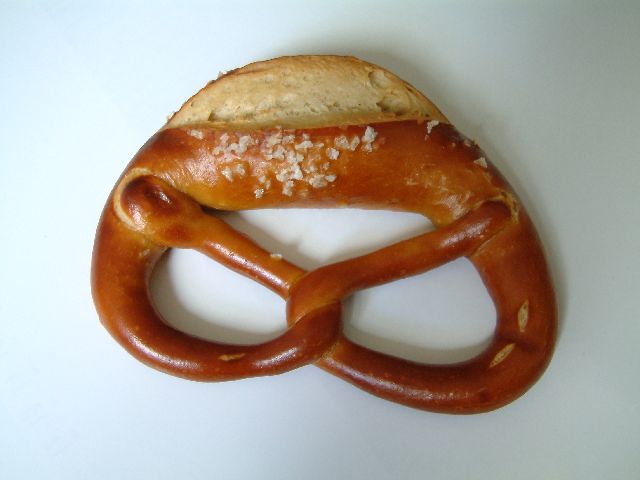Breads, Brezeln & yeast-based products gallery (brezel)
Brezeln (singular brezel) are a common baked food in Germany, especially the southern part. It is related to the American pretzel, with which it shares its knot shape and the salty taste. However unlike the hard and small pretzel, a breze is about 15cm wide, with a soft inside and a crunchy outside. The characteristic colour and taste is due to the dough being dipped into lye and coarse salt before being baked.
Also available, especially at festivities like the Oktoberfest is the "Riesenbreze" (giant pretzel), roughly 30 by 25 cm, usually consumed with Hendl (chicken) or Beer.
Brezeln are often eaten for breakfast and as a snack, particularly cut in half with butter.
The word breze is ultimately derived from the Latin brachiatus, having branches like arms, from brachium, meaning arm.
There are also several stories about the origin of the pretzel shape. One legend holds that a baker accused of larceny (stealing) was offered the opportunity to cancel his sentence if he could make a bread through which the sun could be seen thrice; the ingenious baker twisted his dough into a pretzel before baking.
Another common story says that the shape represents the position of arms of a monk in prayer. Another story says that the three holes represent the Christian Holy Trinity. A sign with three rings was an old symbol to mark a bakery in Germany, but sources differ as to whether the signs were made to imitate the pretzel or the pretzel was made to imitate the signs. According to some sources, the bagel originated as a variation on the pretzel. However, stories told of the pretzel are likely apocryphal, and the actual origin of the pretzel seems to be a mystery.
Portions of this article is licensed under the GNU Free Documentation License. It uses material from the Wikipedia articles "Breze" & "Pretzel".


